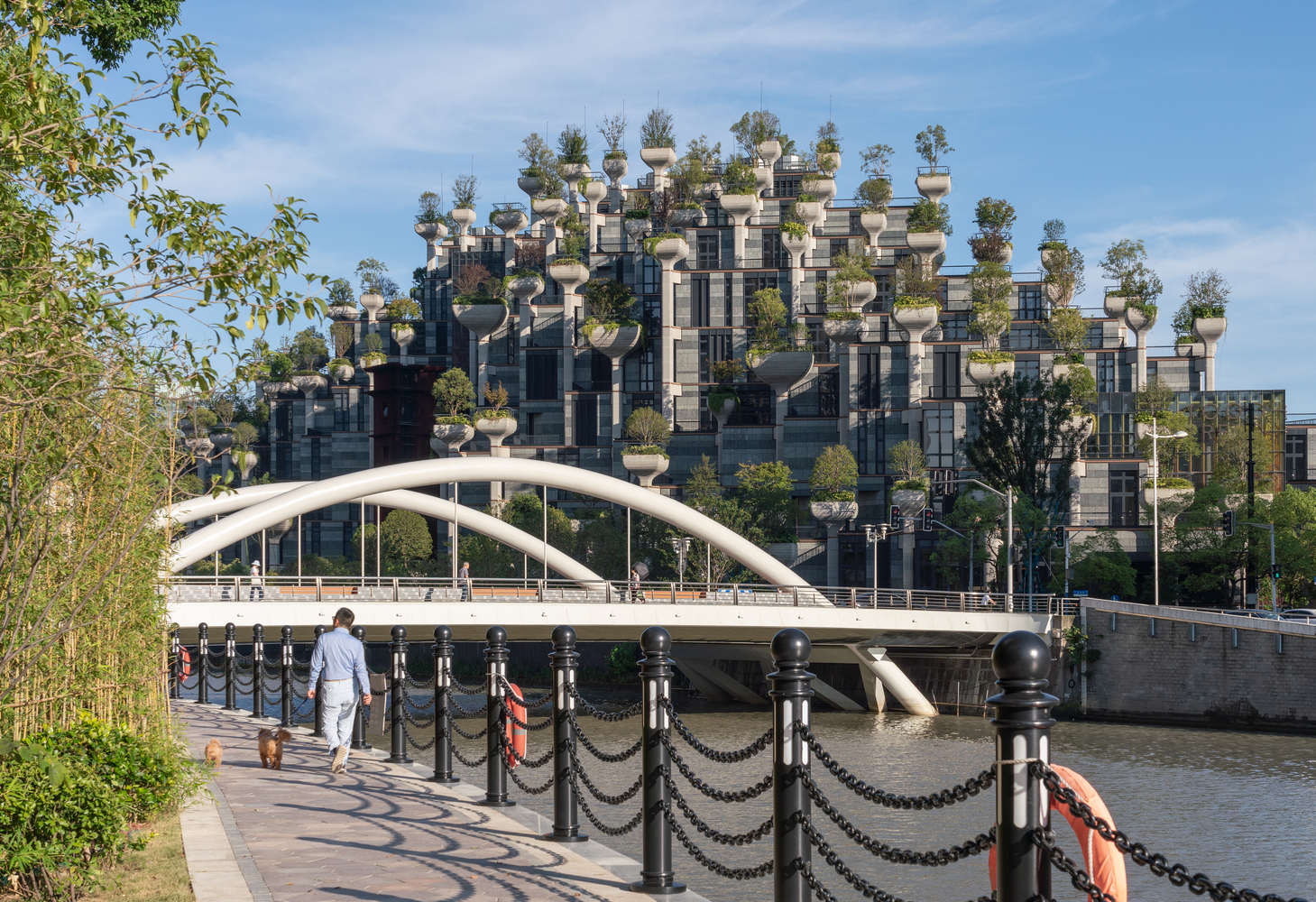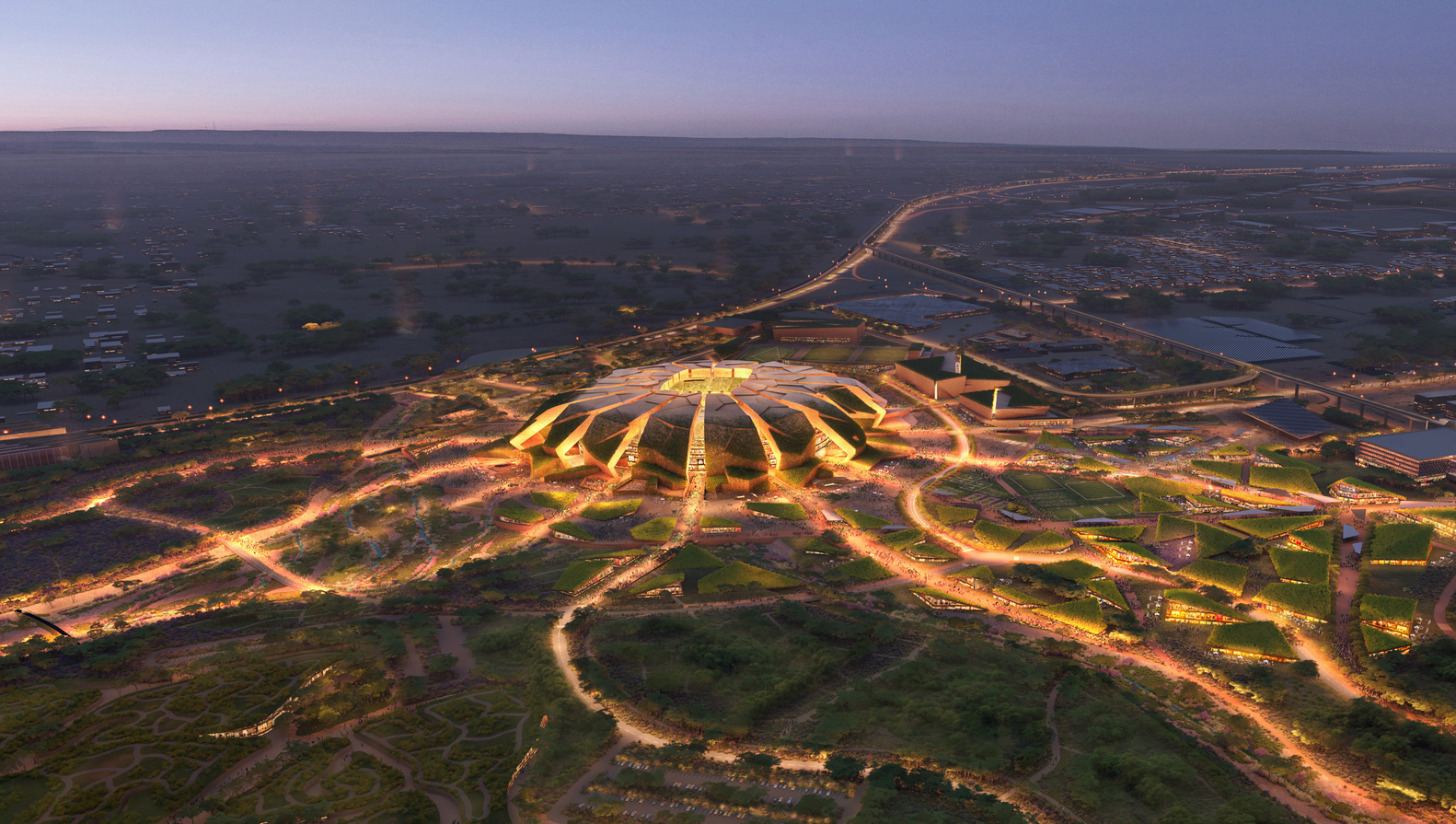What If: Architecture Responds to Pollution Issues in One of The 10% Most Polluted City in The World

Many people think that greening is a direct solution to pollution problems. For them, this is the most effective way to address the pollution issue, even though in fact there are many other methods that could be considered more 'optimal'. This stereotype is even reflected in an ambitious architectural project, 1000 Trees.
 1000 Trees by Thomas Heatherwick. Photo taken from ArchDaily (cr: StudioSZ Photo).
1000 Trees by Thomas Heatherwick. Photo taken from ArchDaily (cr: StudioSZ Photo).
Initiated by British designer Thomas Heatherwick, the issue of pollution was answered by covering a nine-story building with 1000 trees — in accordance with the name 1000 Trees — and more than 250,000 plants. The project, which was designed in 2015, was completed in 2021. From a certain point of view, it is interesting to question that after several years of existence, to what extent 'green' at 1000 Trees fulfills its initial intention in responding to the issue of pollution in Shanghai as a city that occupies 678th position of the 7323 most polluted cities in the world.
 Greenery in 1000 Trees. Photo taken from ArchDaily (cr: StudioSZ Photo).
Greenery in 1000 Trees. Photo taken from ArchDaily (cr: StudioSZ Photo).
The 'greenery' approach used in 1000 Trees is a logical solution to this issue because plants naturally absorb dirty air and convert it into clean air. However, a British architecture professor who focuses on sustainable architecture and energy efficiency, Philip Oldfield, takes a counter position to this simple logic. Furthermore, he even said that 1000 Trees would be better off never being realized because "the carbon costs outweigh the environmental benefits". It has been proven by comparing the amount of carbon produced during the development process to the amount of carbon absorbed when the tree grows. Each planter in this building uses around 14 tonnes of concrete with each kilogram of concrete producing 0.111 kilograms of carbon dioxide (CO2). On the other hand, plants only absorb 10 kilograms of CO2 per year for the first 20 years. This means that each planter in this building produces 1,554 kilograms of CO2 and it takes 155 years for the plants to absorb it again (excluding CO2 from nearby vehicles, construction processes, maintenance, etc.). Based on these calculations, it is proven that the cost of the carbon produced is far greater than the positive impact on the environment.
 Concrete Planter in 1000 Trees Building. Photo taken from ArchDaily (cr: StudioSZ Photo).
Concrete Planter in 1000 Trees Building. Photo taken from ArchDaily (cr: StudioSZ Photo).
This kind of design decision should be considered realistically and both in the short and long-term, not just thinking about far-reaching goals but seeming apathetic about the short-term impacts. Building green spaces in the middle of the city can indeed help reduce pollution, but in practice, there are many things that must be considered so that what is created does not seem like it is made up.
After reviewing the suboptimality of this building, the next question is; Is this building necessary or not to exist? If taken back in context, this building was built right next to the park and is claimed to be an extension of the park on that site. When the building, which is claimed to be an extension of the park, is even said to be better not to be realized, then wouldn't it be better if the building didn't exist and just let the park next to the site stand alone?
Even though there are many negative criticisms directed at 1000 Trees, Jincy Iype, journalist and architect at stirworld.com thinks otherwise. According to her, “Thomas Heatherwick explored ways to pull the landscape across the site to create a fresh type of artificial, urban topography.” She considers that the existence of this building creates interesting new topography. This statement is difficult to agree with because an architecture that is built with a specific purpose must fulfill its main purpose first before it can add value with other 'features'. This means that the new topography that is considered interesting becomes meaningless because the building actually fails to achieve its goals.
Dr. Peter Brannan, a researcher at the University of Leeds, criticized 1000 Trees because he thought the project was just a kind of 'greenwashing' or an attempt to beautify the company's image and divert attention from the main problem of pollution in Shanghai. In addition, there is also an opinion from Philip Oldfield who added that "There are opportunities for architecture to engage better with nature," which is certainly very easy for us to agree with. This is an indication that greenwashing in a building will have an impact on other buildings that really respond well to nature and that the opportunity for architecture to be able to dialogue with nature is still very widely open.
In the end, I can answer the initial question about the extent to which 'green' in 1000 Trees fulfills its initial intentions through presentations which indicate that this project is visually paying attention to the context of the pollution crisis in China, but analytically, it could be said that its application is too literal without considering other factors However, from another perspective, even if this building is not a solution to the problem of pollution, this building actually deserves attention for its interesting topography. Even so, it is still a shame that the greenwashing that is carried out fades what is there and even impacts other buildings that really want to have a dialogue with nature.
This article was written by Ricky Fernando, an architecture student at Pelita Harapan University.










Authentication required
You must log in to post a comment.
Log in